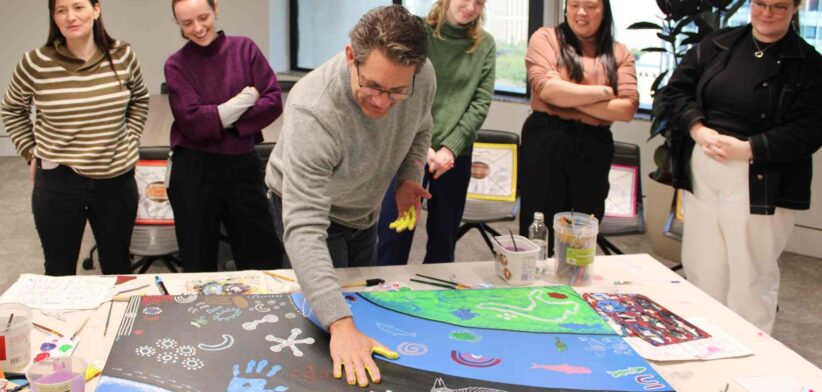First nations businesses are opening a new frontier of unique Australian enterprise that marries tradition with opportunity.
The inaugural CEO of the Queensland Indigenous Business Network (QIBN) Donisha Duff said indigenous culture was bringing fresh life to business ventures across fashion, food and traditional medicine.
This was on top of First Nations people creating businesses around trades and the ongoing role of traditional owners in renewable energy, and brokering ecotourism opportunities from native title lands.
Ms Duff said there was an under-awareness of the tradition of commercial trade in indigenous communities.
Her grandfather had been a pearl diver, and many families had exercised entrepreneurial plays around land and sea-based industries.
“That’s the history of Australia, that’s our legacy,” Ms Duff said. “For a lot of our communities and our businesses it is about reinvigorating that and remembering that.
“But we need to operate now in a modern context and make adjustments to ensure businesses are compliant and set up for growth.
“In our communities there are also a lot of challenges to overcome with remoteness and connectivity.”
The QIBN was established as the state representative body for First Nations businesses in Queensland under the auspices of the State Government and with the help of private sector partners.
One of those partners, McCullough Robertson Lawyers (McR), has been assisting the QIBN to create a framework to grow First Nations businesses.
McCullough Robertson YARN committee chair Rob Sosnowski, a corporate advisory lawyer at the firm, said the relationship created learning in both directions.
The firm could help indigenous businesses work within the required legal frameworks and introduce fledging companies to clients who could help them.
First Nations businesses could share a centuries-old pattern of working together for a greater good and building deep relationships based on mutual respect and cultural understanding.
Mr Sosnowski said McR had been offering cultural awareness training to staff for four years, and this provided insights into the cultural nuances of indigenous practices.
“The approach (in the training) is very culturally centred in that it dismantles a lot of non-indigenous constructs around how indigenous teaching occurs,” he said.
“For the first hour it can be just telling stories. It’s a really interesting way to see how indigenous people might see things differently and really getting a taste for that.
“Once you add the layers it really provides an insight into that other perspective which hopefully then translates into better outcomes for everyone.”
The concept of YARN is based on informal conversations with family, friends or other community members.
Mr Sosnowski said McR evolved its formal Reconciliation Action Plan (RAP) structure into a YARN committee to better reflect the totality of what the firm was trying to achieve through this exercise.
“For a lot of people involved there is an element of having a pursuit and passion that is outside of the immediate work that we do,” Mr Sosnowski said.
“People see things that have not been addressed in society. It comes back to diversity being important and recognising that not everyone in society starts in the same place.
“It is using the platform and the privilege that we have through our positions in a law firm like McCullough Robertson to pass on knowledge and our access to different businesses.”
Ms Duff said, since she took up the QIBN CEO role in February 2024, she had encountered some “fantastic” business run by First Nations people across the state.
“There are plenty of people with a very strong entrepreneurial drive and a vision to drive economic benefits for their communities,” she said.
“A lot of communities are starting to think about how they leverage natural assets in a way that preserves Country but still allows the development of ecotourism for example. There’s an appetite in the tourism market internationally for that.
“Food, and fashion and botanical are pretty hot at the moment. Many are looking at how they can scale or be trade ready. A lot our business owners are first generation so they are finding their way through the process for the first time.”








